If you wanna be my lover… you gotta know the ins and outs of 90s designs and styles. Read on to get the lowdown.
Ready to take a journey back to the most contradictory and creative decade of all time? The 90s called and want their fashion back – so we’re going on a little trip to find the origins of so many of the styles that are having a resurgence today.
Millennials spent their youth – or at least their childhood – in the 1990s. This decade was formative for many adults today, and it a was a wild time when subcultures rolled together into one amorphous, sometimes contradictory ball of loud noises and bright colors; Pop culture with a capital P. Grunge, rave, hip-hop, punk, goth and the most dazzling pop stars imaginable; the 90s had something for everyone.
The trends of the 90s were reflected in the spaces of music, fashion, television, and incredible toys (Tamagotchi says hi). We get all sentimental at the thought of baggy jeans, crop tops, flannel shirts, and tie-dye. But styles also clashed in the world of design; the grunge aesthetic of Nirvana came up against the pink bubblegum pop of Britney Spears, creating a new space for experimentation and style-conscious rule-breaking.
If you know every word to the songs of the Lion King and bawled your eyes out when Jack went down with the Titanic, you’ve come to the right place. For all you nostalgic 90s babies out there, we’ve rounded up some of the biggest design trends of the decade.
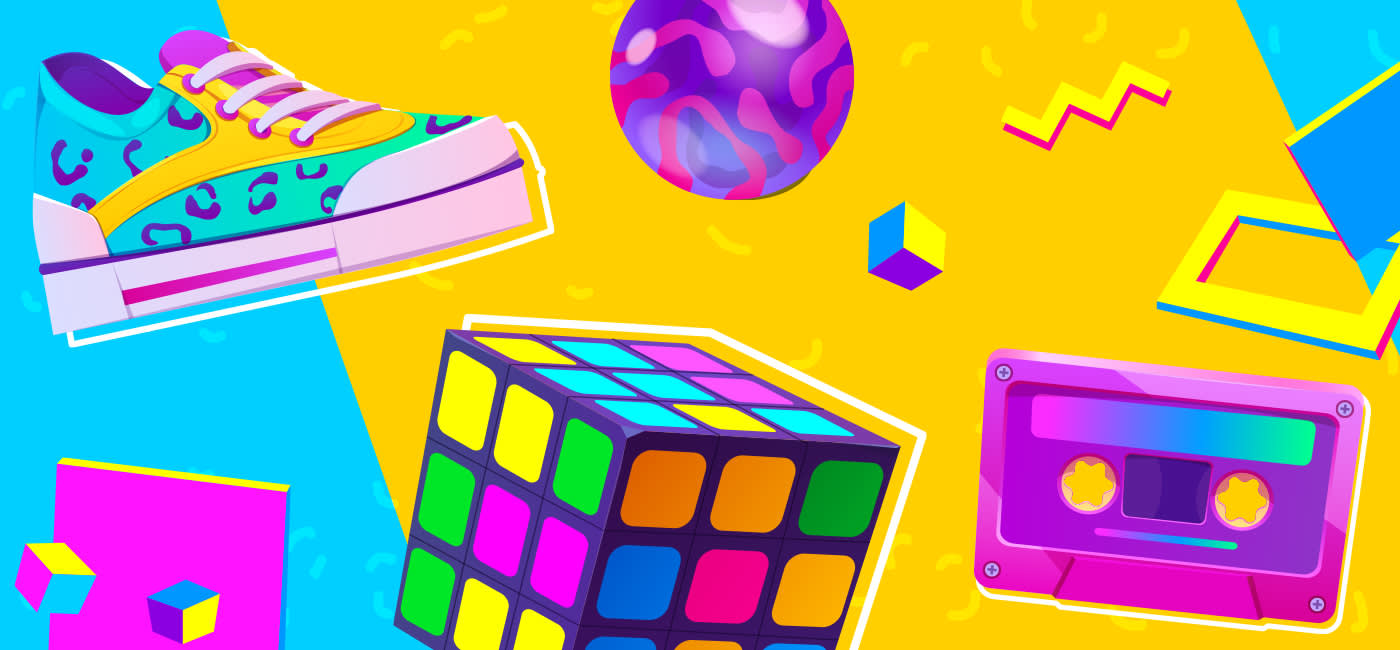
Pop culture
Butterfly clips and lip smackers, Friends and the Spice Girls, the 90s was a decade filled with unforgettable pop culture moments – something that filtered through almost every aspect of fashion, music, movies, decoration, and design. We were all BFFs with Rachel and Phoebe, incredible dance moves were born, and fast food was suddenly high on the menu. Although the 90s ended more than 20 years ago, some of these icons are (thankfully) still making waves today. Many of these trends have made a glorious comeback in recent years, with brands, artists, and designers specifically tapping into the nostalgia of millennials, now that they have real jobs and some sort of disposable income. Some of the world’s biggest brands have begun to incorporate the pop culture elements of the 1990s into their advertising, experimenting with iconic design styles such and grunge, Memphis style, and anti-design.
A brief history in designs
The beginning of the 90s was initially characterized by the trends of the 80s, such as the Memphis style. The rest of the decade was mainly led by technological progress, which offered designers almost unlimited possibilities for expression. This led to the fact that in the 90s there was not just one unified movement in style, but many different directions. So many, in fact, that a counter-movement to the very concept of cohesive style emerged in the anti-design movement, in which design rules were consciously ignored.
The style of the 1990s was a colorful mix of different influences that reflected cultural and technological change. Grunge and minimalism emerged and embodied rebellious aesthetics in their own ways, one by subverting the aesthetic consumerism of mainstream pop and the other by rejecting its excess and loud palette. Pop culture references and bold colors were popular, while techno-futurism embraced the digital age. Typography experimented with unconventional approaches. Gradients, patterns and a DIY ethos added depth and individuality, and thanks to their openness, the designs of the 90s permanently changed the visual landscape.
Backstreet’s back: 90s design comebacks
Grunge
The grunge movement emerged in the early 90s and had a huge influence on fashion and design. It was characterized by its rebellious and non-conformist attitude, reflected in its casual, second-hand style. Flannel shirts, ripped jeans, and band tees were inspired by famous style icons like Kurt Cobain.
Layouts without grids, the aesthetic of torn and shredded paper or other used materials, and the scanning and deforming of structures and textures are typical of grunge. The mix of analog and digital design elements is characteristic of this dynamic style.
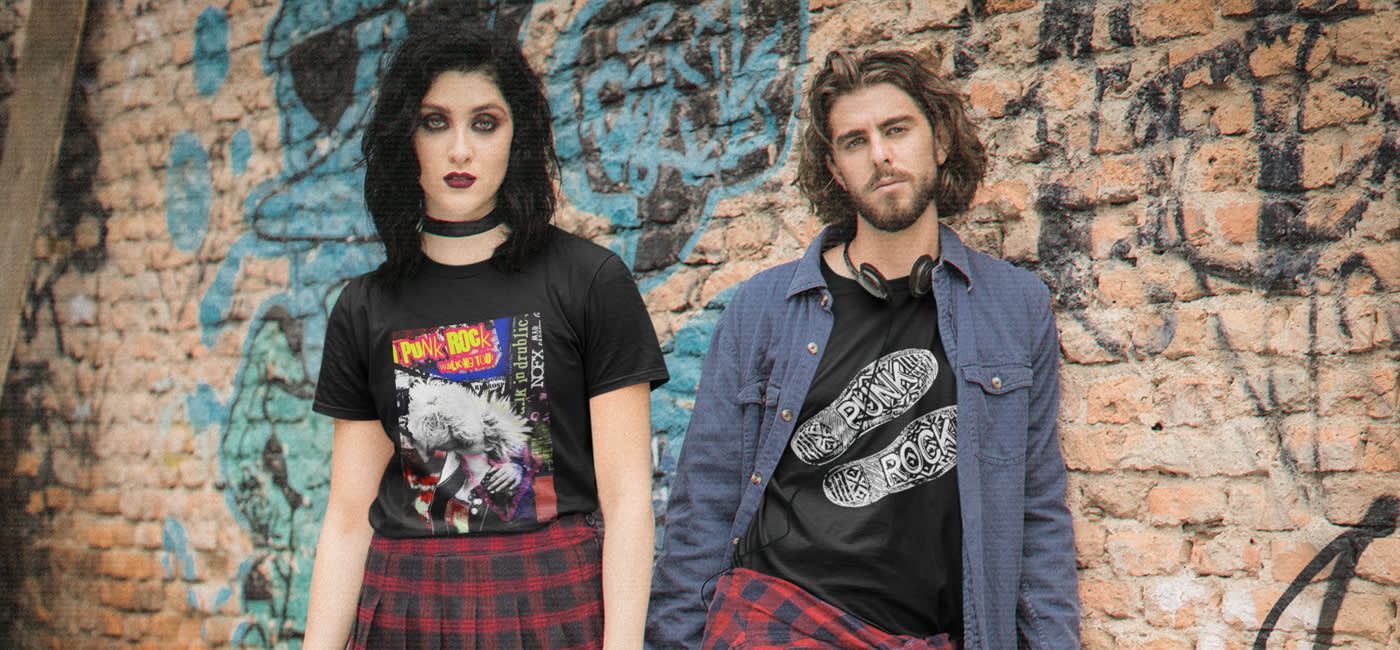
Minimalism
While grunge represented a more relaxed and raw aesthetic, minimalism developed as another alternative to pink, shiny popstars. It emphasized simplicity, clean lines, and a pared-back approach. Minimalist design was often characterized by monochromatic color schemes, geometric shapes, and a focus on functionality.
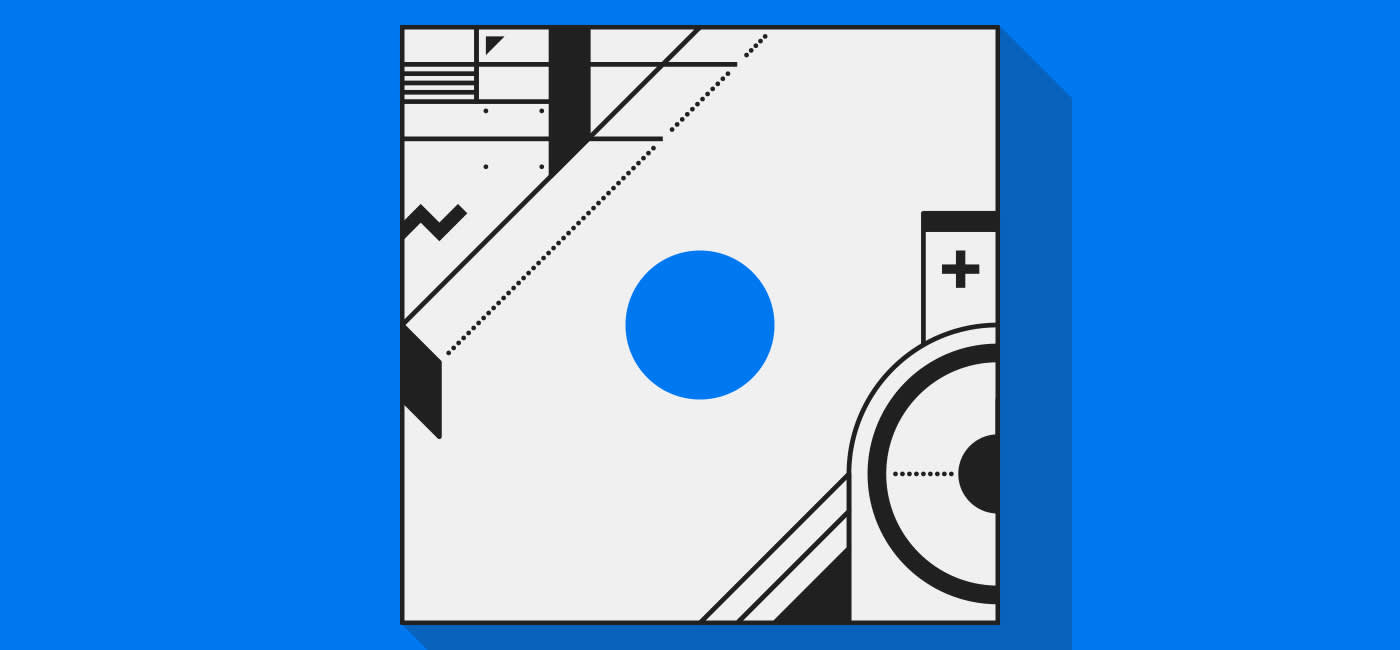
Pop culture
The pop culture-influenced design styles of the 1990s were a vibrant and mashed-together fusion of various influences. Nostalgia was celebrated and popular icons and references found their way into design. Elements from movies, television shows, video games and comics became central motifs that appealed to the interests and memories of different subcultures and generations.
Bold and bright colors, neon hues, and rich color palettes dominated the design landscape. Typography took on experimental traits, playing with proportions, distortions, and mixed fonts. Gradients, patterns, and DIY aesthetics gave designs a playful and dynamic feel. The pop culture design style of the 90s left a lasting impressing and became the particular dominant expression the period.
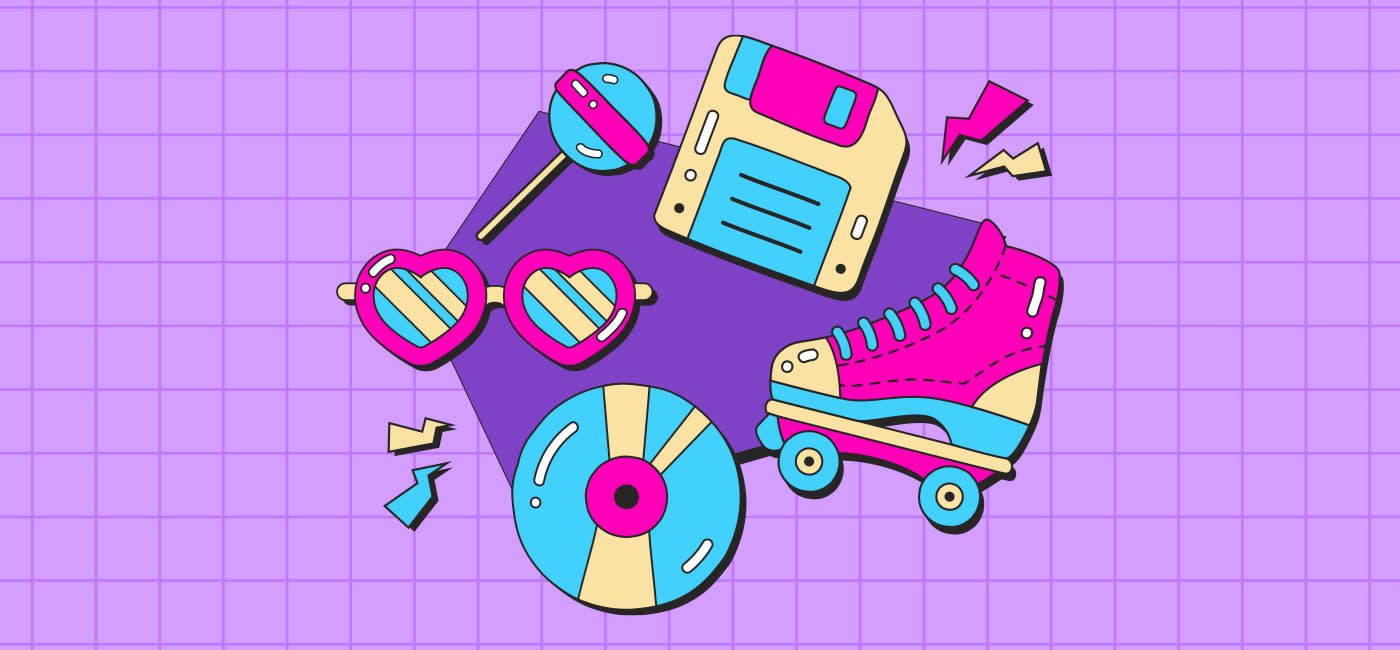
Techno-futurism
The style of techno-futurism in the 1990s reflected the enthusiasm and fascination for the emerging digital age. It was characterized by a sleek, futuristic aesthetic inspired by technology and science fiction. Metallic finishes, neon colors, and digitally inspired graphics were key elements. The color palette included bold and contrasting tones that conveyed a sense of energy and innovation.
Typography experimented with unconventional and innovative approaches. Color gradients, patterns, and slender geometric shapes added depth and dimension to the designs. The techno-futuristic style of the 90s was characterized by its typical dynamic aesthetic, which explicitly welcomed technological progress.
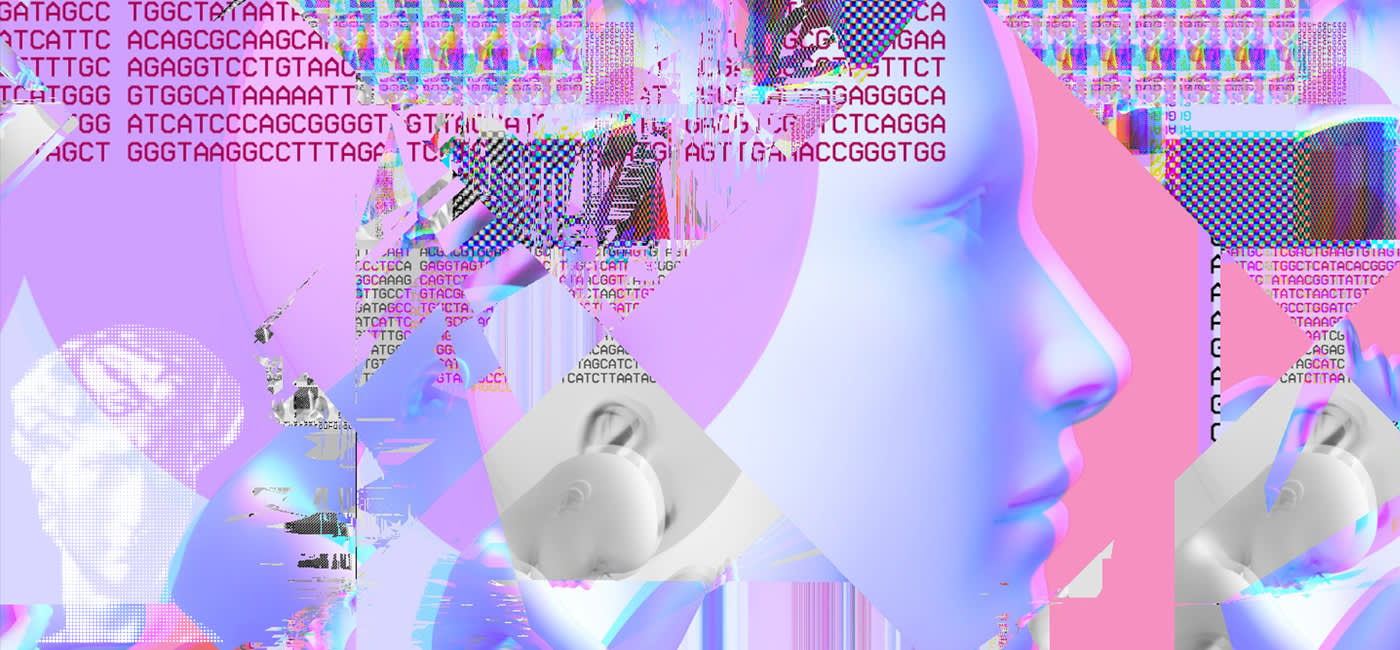
Bold & vivid colors
Bright, bold colors were a trademark of the 90s. They brought a sense of energy, excitement and individuality to various areas of design, including fashion, graphics and interior design.
Petrol, magenta, neon green, electric blue, and other saturated hues dominated the color palettes of the time. These colors were often used in contrasting combinations, creating eye-catching compositions. Neon colors and fluorescent tones became increasingly popular and were found in everything from clothing to advertising.
The daring color choices of the 1990s reflected the cultural change and lifestyle of the time. They conveyed a sense of rebellion, non-conformism, and a desire to stand out. These bright colors were picked up by the various design movements such as techno-futurism and pop culture inspired aesthetics.
Wherever they were used, the bold and bright colors of the 90s made a statement. They conveyed a sense of fun and playfulness, broke the boundaries of traditional color schemes and invited experimentation. To this day, they awaken a longing for the lively spirit of that decade.
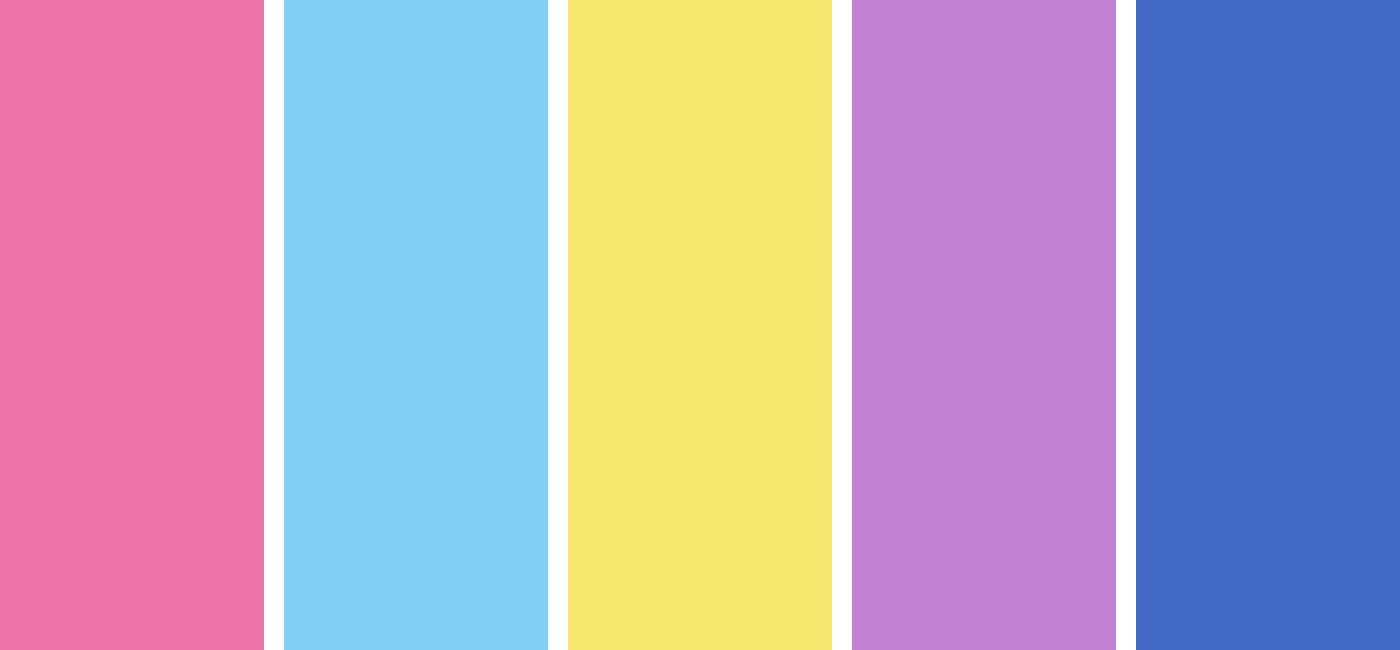
Find more inspiration here: Pinterest 90s color palette
Experimental typography
The typographic experiments of the 1990s broke with traditional rules and pushed the boundaries of typography that had been common until then. Designers used distorted and deconstructed letterforms, mixed different typefaces, and experimented with scale and spacing.
Hand-drawn elements and a collage-like aesthetic became popular. Collage techniques, cut-and-paste elements, and a layering of text added depth and meaning to typographic compositions. Designers challenged the status quo, pushing the limits of legibility with their typefaces and thus expanding visual communication. These experiments continue to influence design practice today and emphasize the creative freedom of typography.
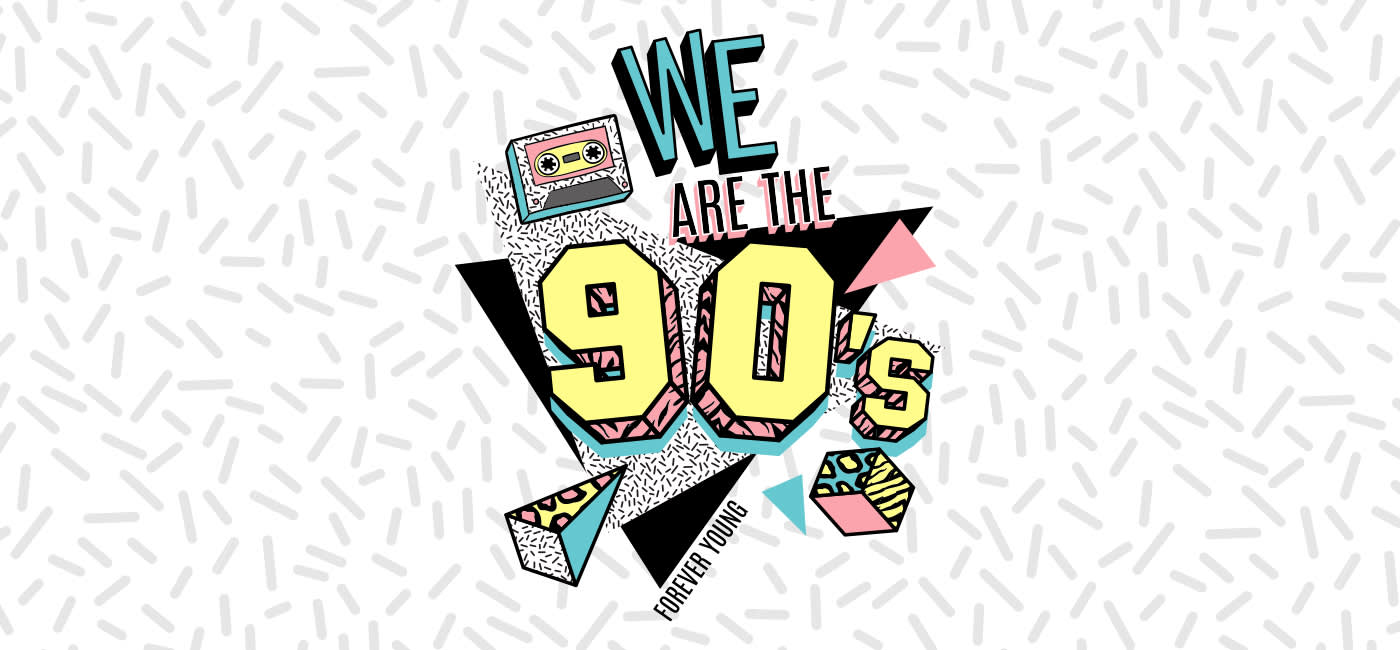
Color gradients and patterns
In the 1990s, color gradients and patterns were important design elements that added a special visual touch to creative media. Designers used color gradients to create depth and dynamics, while patterns provided playful and decorative accents.
Strong contrasting colors were often used, flowing into each other. They stood for energy and embodied the dynamic spirit of the time.
Patterns were another important element, adding a playful and decorative touch to the various designs. Polka dots, checkerboard patterns, squiggles and abstract shapes provided structure and rhythm, often in bright color.
The combination of these elements created eye-catching and exciting designs that celebrated the individuality and creativity of the time. This aesthetic continues to inspire contemporary designers to add depth and movement to their creations.
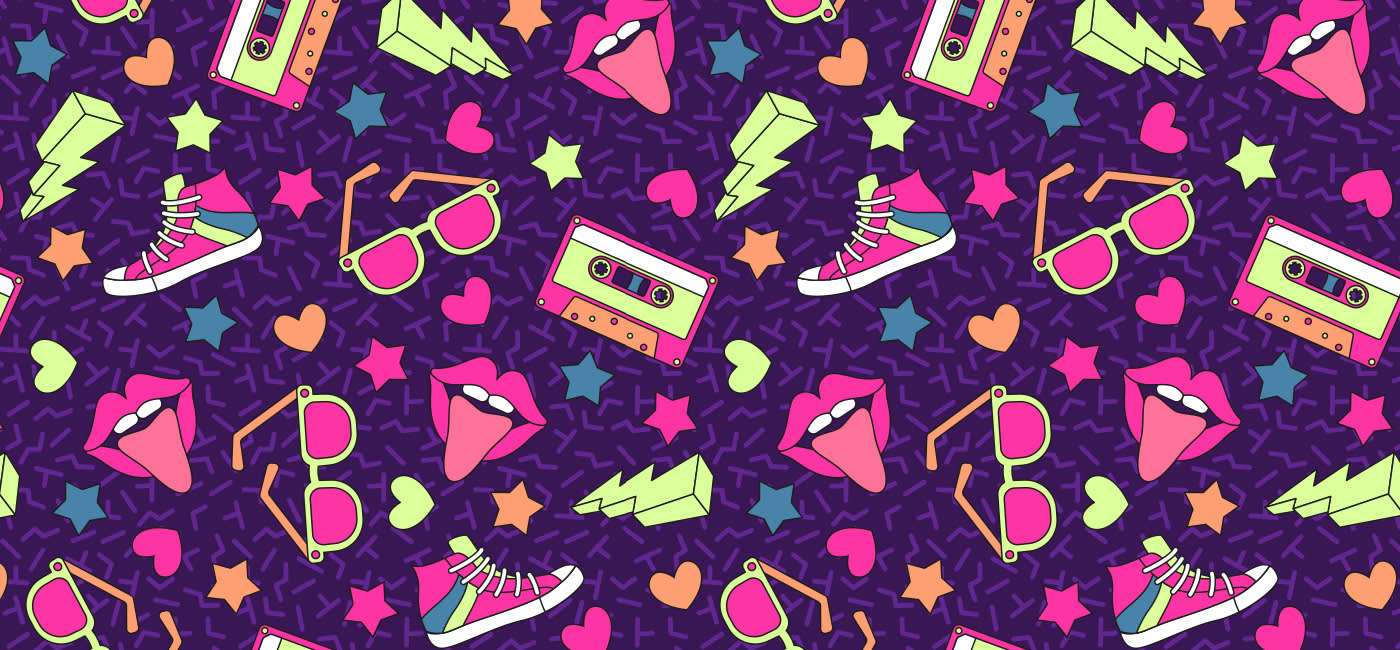
Dive in: inspiration and tutorials
Practice makes perfect! These tutorials will show you how to master the designs, patterns, and lettering of the 90s, and let you incorporate 90s design innovation into your own creations.
- https://creativecloud.adobe.com/de/discover/article/must-love-the-90s
- https://design.tutsplus.com/articles/90s-graphic-design-trends-from-aesthetic-fonts-grunge-patterns-and-rave-flyers–cms-35224
- https://reallygooddesigns.com/90s-graphic-design/
- https://stock.adobe.com/de/search?k=90s%20patterns
- https://design.tutsplus.com/tutorials/how-to-make-90s-geometric-pattern-using-basic-shape–cms-29334
- https://www.vandelaydesign.com/90s-patterns/
- https://www.designyourway.net/blog/90s-fonts/
Can’t get enough of the 90s? Our Pinterest mood board has enough inspo to keep you satisfied.
Thirsting for more of that sweet, sweet nostalgia? We’ve put together the most important and influential vintage style in one fun little article.
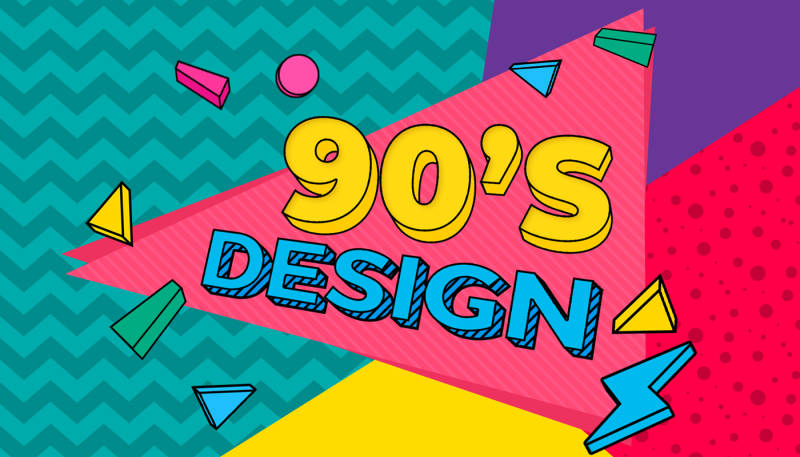
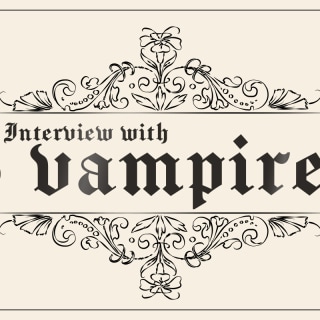
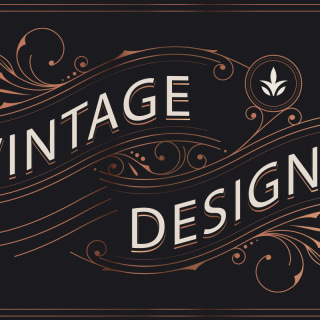
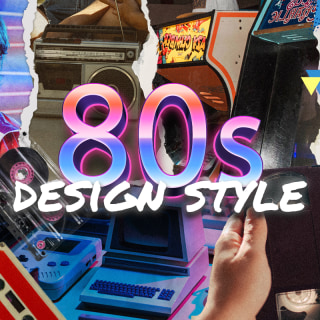
These are the most stunning designs